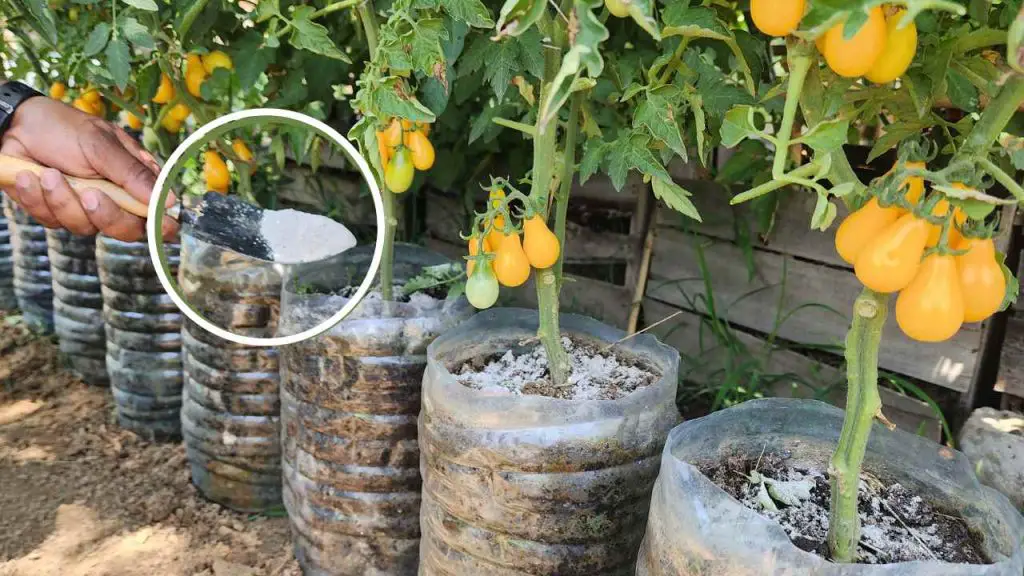Thank you for visiting our guide to growing tomatoes in plastic bottles that have been recycled. Within the context of this forward-thinking and environmentally conscious method of gardening, we will demonstrate how to reuse commonplace things in order to construct trellises that are both space-saving and effective for your tomato plants.
To cultivate tomatoes that are growing while simultaneously reducing trash, you can make use of straightforward items such as twine and plastic bottles. As we explore this innovative and environmentally friendly method of cultivating delicious tomatoes at home, we want you to make the journey with us.
Prepare The Bottles For Use.
To begin, make sure that the plastic bottles are completely cleaned. All labels should be removed, and then they should be washed with soapy water to remove any residue. Before moving forward, make sure the bottles are totally dry.
To build pots for planting, gently cut the bottles using scissors or a craft knife at the appropriate sharpness. You can make a cut near the top of larger bottles, which will result in a container that is deep.
As a result of being cut closer to the bottom, smaller bottles can be made to have a shallower depth. You can allow extra water to drain out of the bottles by poking holes or drilling holes in the bottom of the bottles. It is essential to have adequate drainage in order to avoid waterlogging, which can be detrimental to tomato plants.
What Is The Best Time To Transplant Tomatoes Outside?
Tomatoes are susceptible to damage by frost. Following the day on which the last frost is anticipated to occur in your region, they should be transplanted outside. Generally speaking, gardening resources or agricultural extension offices in the area are good places to go for specific information like this.
When the soil is warm, tomatoes do well. When transplanting, the ideal temperature for the soil is between 15 and 21 degrees Celsius (60 to 70 degrees Fahrenheit). Using a soil thermometer is one way to assist you in determining this.
Which Soil Is Ideal for Planting Tomatoes?
When it comes to tomatoes, the optimum potting soil should have a pH range that is somewhere between slightly acidic and neutral, ideally between 6.0 and 7.0. Organic content, such as compost, peat moss, or manure that has been allowed to decompose, should be present in potting soil of high quality. The retention of moisture, aeration, and the provision of critical nutrients are all facilitated by this effect.
The Process Of Taking Care Of The Plants.
Position the bottles in a spot where they will be exposed to a sufficient amount of sunshine (at least six to eight hours per day). Maintaining a continuous level of moisture in the soil while preventing it from becoming waterlogged is essential for the plants. In order to provide sufficient area for the most robust plants to develop, seedlings should be thinned down if seeds are used.
Support Your Plants.
To provide support for your plants, you can make use of tomato cages as well as a wide variety of other support structures. There is a possibility that tomato plants will get heavy, particularly once they begin to produce fruit.
The weight of the plant could cause the stems to break if they are not supported, which would be detrimental to the plant. By providing the plants with support, you will be able to better position them to receive sufficient sunshine, which is essential for the development of plants that are healthy and produce fruit.
Keep Reading
- HOW TO GROW ROMA TOMATOES IN A RAISED BED?
- HOW TO STAKE TOMATOES IN A RAISED BED?
- HOW MANY TOMATO PLANTS IN A 4×8 RAISED BED?
Take Out The Suckers.
Small offshoots known as suckers are capable of developing in the crotch junction, which is located between the stem and a branch. Upon removal, the plant diverts more of its energy toward the development of fruit rather than toward the growth of its vegetative parts.
This can lead to tomatoes that are larger and therefore healthier. The removal of suckers helps to increase airflow within the plant, which in turn reduces the danger of illnesses such as blight or fungal infections, which thrive in environments that are moist and congested.
Your Tomato Plants Need To Be Fertilized.

It is possible for tomato plants to benefit from the application of slow-release nutrients such as bone meal and manure. They offer a consistent supply of nutrients over an extended period of time, which helps to maintain healthy growth and the development of fruit.
To prevent the plants from being burned by an excessive amount of nitrogen, it is important to make sure that the manure is well-composted. Phosphorus is an essential element for the growth of roots and fruiting, and bone meal is a superb supply of this mineral.
Remember to adhere to the application rates that are indicated in order to avoid over-fertilizing the plants, which can be detrimental to their health.
Harvest Tomatoes.
As they mature, the majority of tomatoes undergo a color shift. As an illustration, red variants eventually turn red, yellow kinds eventually turn yellow, and so on.
On the other hand, certain types, such as select heirloom tomatoes, continue to be green even after they are fully ripe, thus it is crucial to be familiar with the variety you are growing. The texture of ripe tomatoes is hard, although they have a tiny yield under the touch. It is vital that they are neither too soft nor too harsh.
